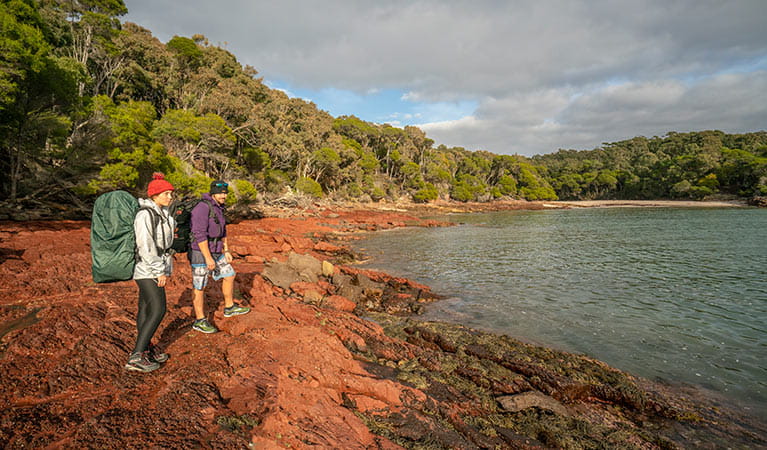Light to Light walk
Green Cape area in Beowa National Park
Overview
Begin this multi-day walk at Boyds Tower down the far south coast, and end at Green Cape Lighthouse. Stop for a swim and the opportunity to spot seals, seabirds and whales.
- Where
- Green Cape area in Beowa National Park in South Coast
- Distance
- 30km one-way
- Time suggested
- 2 - 3 days
- Grade
- Grade 4
- Trip Intention Form
-
It's a good idea to let someone know where you're going. Fill in a trip intention form to send important details about your trip to your emergency contact.
- Personal Locator Beacon
-
Hire a Personal Locator Beacon (PLB) for free at the Merimbula office.
- Entry fees
- Park entry fees apply
- What to
bring - Drinking water, hat, sturdy shoes, suitable clothing, sunscreen
- Please note
- Take appropriate weatherproof clothing, insect repellant and sufficient food and water (you’ll need around 6 litres per person per day).
- If you choose to walk the track in sections, consider car pooling ahead of time.
- While the track offers easy walking along a well-marked route, it does cover some remote country – it’s a good idea to bring a topographic map and compass, or a GPS
- Remember to take your binoculars if you want to birdwatch and whale watch along the way
Light to Light walk hugs the coastline between historic Boyds Tower and Green Cape Lightstation. It’s one of the best walks on the far south coast of NSW.The views are stunning and ever-changing – from heathland to forest, tea tree groves to banksia woodlands, and sheltered coves to towering red-rock platforms. Plus, with so many seafront vantage points, you can spot seals, seabirds and whales.
Enjoy a small section of the walk – most sections of this walk are easy – or embark on a self-guided, multi-day hike, stop overnight and have a swim at the beach campgrounds.
Rest your head and have a hot shower at Telegraph Station bunkhouse near Green Cape Lighthouse – a great short stay accommodation option for Light to Light walkers.
Take a virtual tour of Light to Light walk captured with Google Street View Trekker.
Also see
-

Green Cape Lighthouse
Green Cape Lighthouse, around 45min south of Eden, is the southernmost lighthouse in NSW. Towering above Green Cape Lightstation Keepers’ Cottages, soak up the maritime heritage and spot migrating whales.
Map
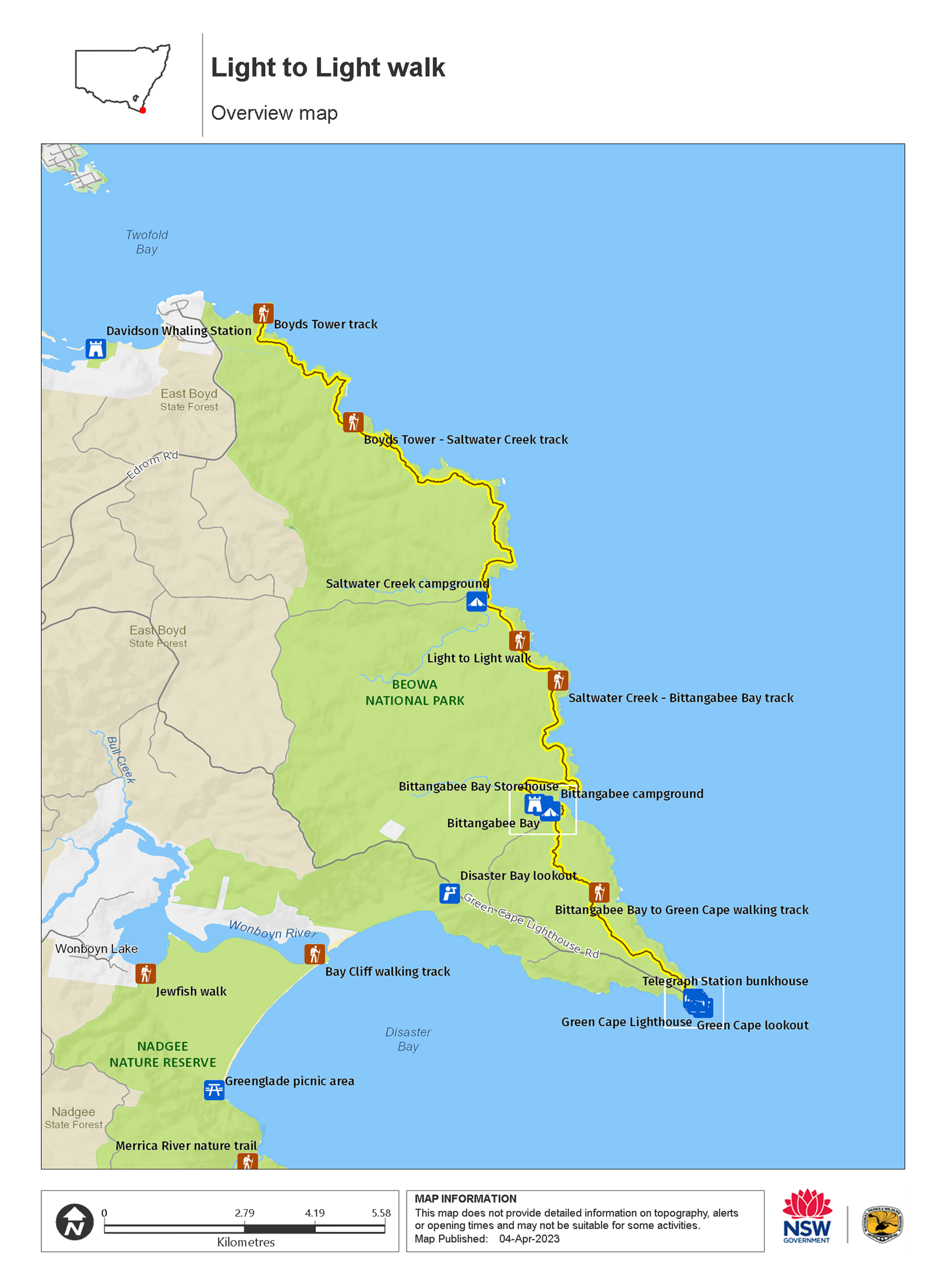
Map
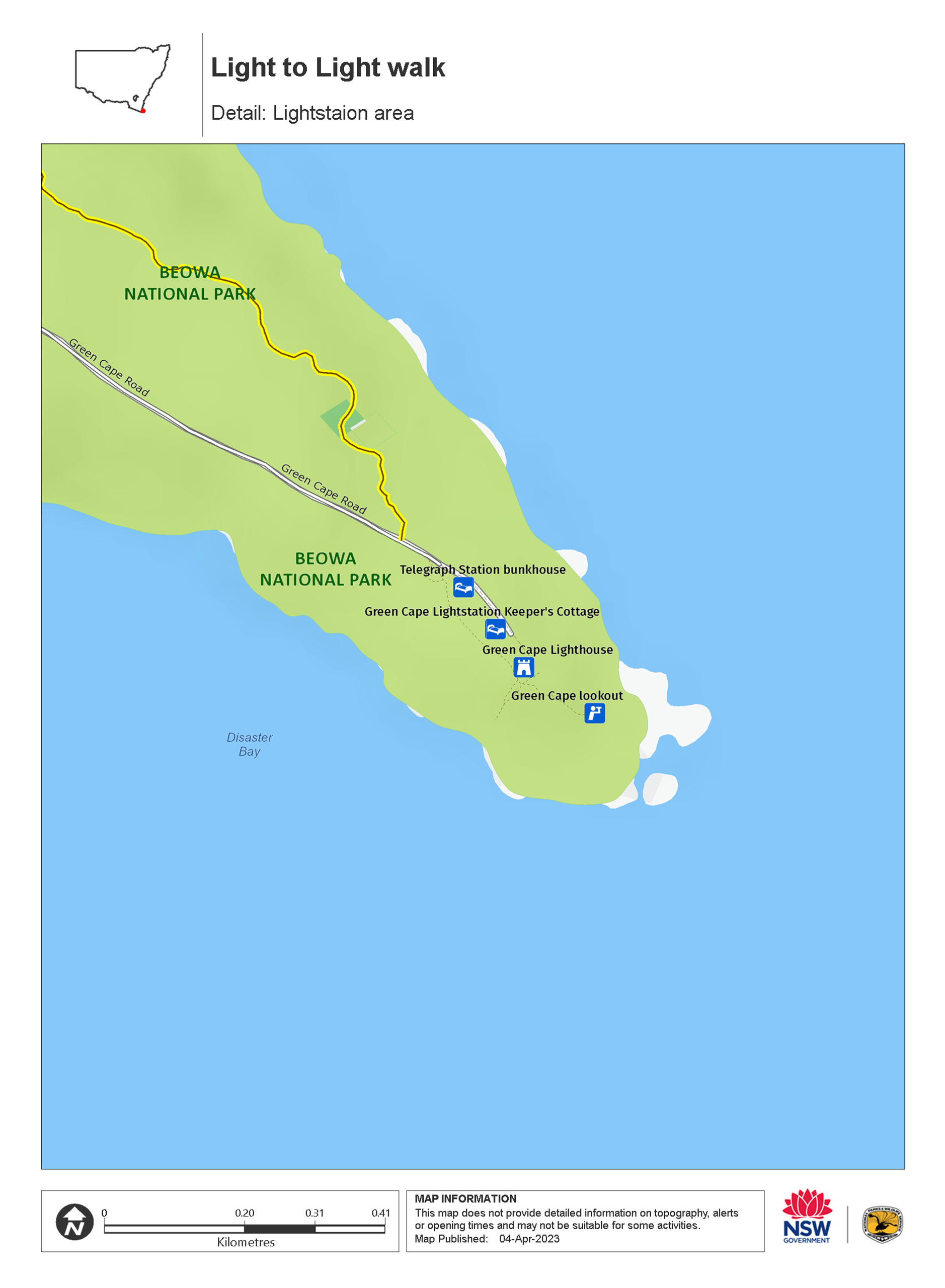
Map
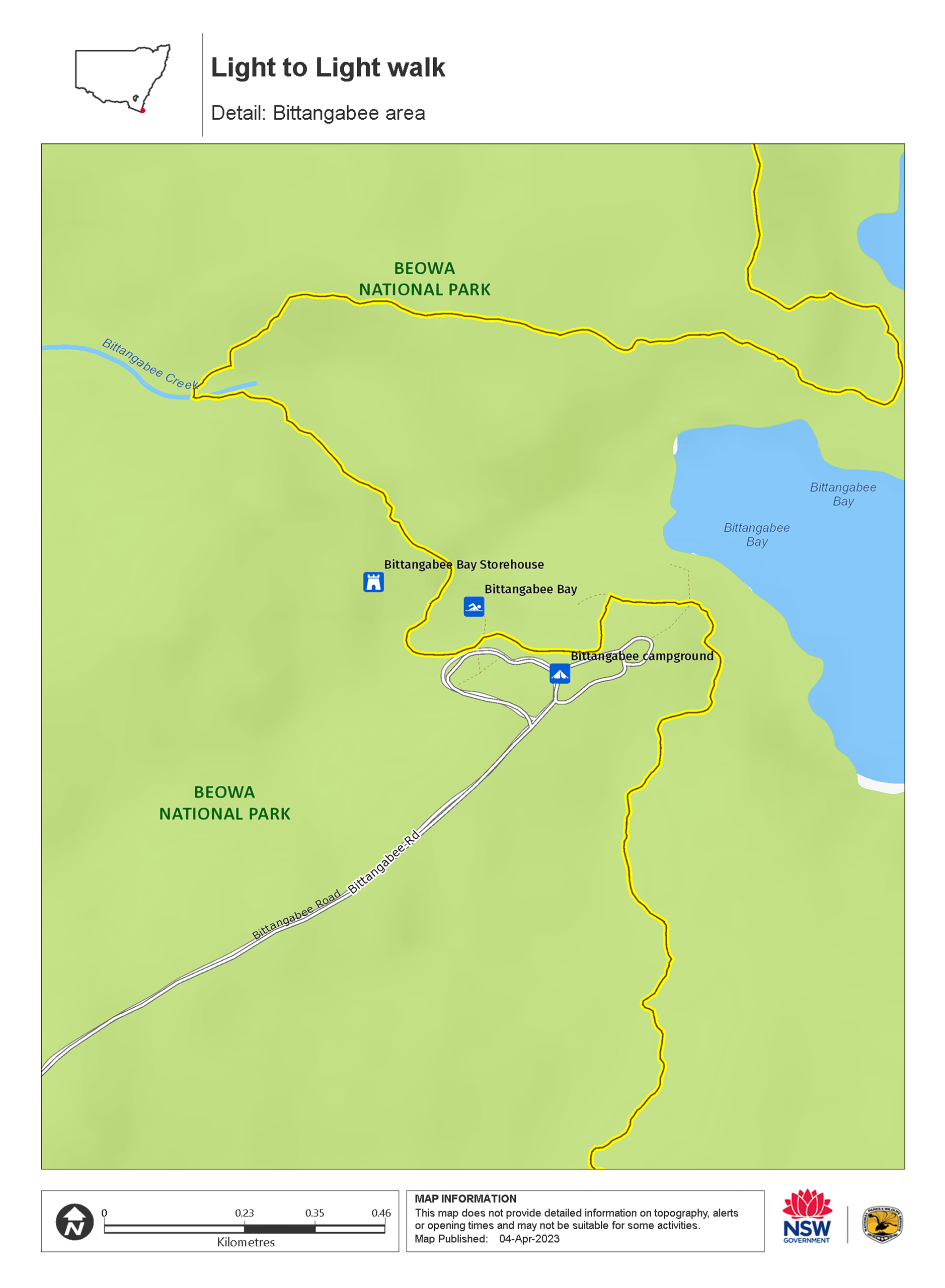
Map legend

Local alerts
For the latest updates on fires, closures and other alerts in this area, see https://www.nationalparks.nsw.gov.au/things-to-do/walking-tracks/light-to-light-walk/local-alerts
General enquiries
- National Parks Contact Centre
- 7am to 7pm daily
- 1300 072 757 (13000 PARKS) for the cost of a local call within Australia excluding mobiles
- parks.info@environment.nsw.gov.au
Park info
- in the Green Cape area of Beowa National Park in the South Coast region
The Green Cape area of Beowa National Park is always open but may have to close at times due to poor weather or fire danger.
-
$8 per vehicle per day in the Green Cape area of the park (south of Eden).
Buy annual pass.
Visitor info
All the practical information you need to know about Light to Light walk.
Track grading
Features of this track
Distance
30km one-way
Time
2 - 3 days
Quality of markings
Sign posted
Experience required
Experienced bushwalkers
Gradient
Short steep hills
Steps
Many steps
Quality of path
Rough track, many obstacles
Getting there and parking
Get driving directions
Boyd’s Tower is in the southern section of Beowa National Park. To get there:
- Travel south from Eden on the Princes Highway for 18km
- Turn off at Edrom Road and follow it to the turn off near the end of the road
Green Cape Lightstation is also in the southern section of Beowa National Park. To get there:
- Travel south from Eden on The Princes Highway for 18km
- Turn off at Edrom Road and follow it for 6km
- Turn right onto unsealed Green Cape Road and follow it for 21km
Road quality
Check the condition before setting out as some of the roads within the park can become boggy when it rains.
Parking
Parking is available at Green Cape Lightstation and Boyds Tower walking track. Parking is available at a number of points along the track, including Saltwater Creek and Bittangabee campgrounds and at Boyds Tower.
Best times to visit
There are lots of great things waiting for you in Beowa National Park. Here are some of the highlights.
Autumn
Camp at Bittangabee Beach campground and see lyrebirds performing their characteristic dance and tail display.
Spring
Visit Green Cape Lighthouse or Boyds Tower to spot whales migrating south to their Antarctic feeding grounds - you might even see females with young calves.
Summer
Plan a camping trip to Saltwater Creek - to enjoy the lagoons and beautiful surf beach.
Winter
Take the Light to Light walk when it's nice and cool and the banksias are in bloom.
Facilities
The campgrounds along the walk are equipped with picnic tables, barbecues, and toilet facilities.
Maps and downloads
Prohibited
Pets
Pets and domestic animals (other than certified assistance animals) are not permitted. Find out which regional parks allow dog walking and see the pets in parks policy for more information.
Smoking
NSW national parks are no smoking areas.
Learn more
Light to Light walk is in Green Cape area. Here are just some of the reasons why this park is special:
Aboriginal culture
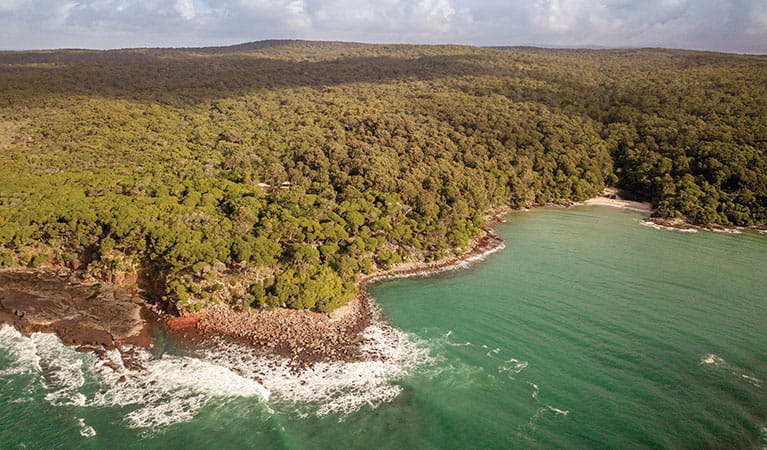
The Yuin People are the Traditional Owners and Custodians of Beowa National Park and they have a long and complex relationship with the coastal environment. At Twofold Bay, the Yuin People had a special relationship with the orca whales. The orcas drove humpback whales into shore, the people used spears to kill them and the orcas and people shared the meat. Aboriginal people later taught European settlers to work with orca whales during the shore-based whaling days of Twofold Bay.
Giants of the deep
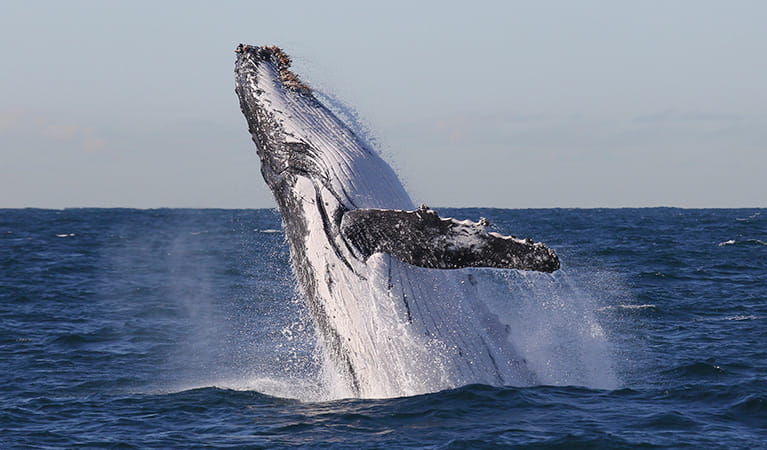
Enjoy some of Australia’s best whale watching here between September and November when hundreds of whales and their calves move in to Twofold Bay to frolic and feed before migrating south to Antarctica. You can get a good view of Twofold Bay from the viewing platform at Boyds Tower. At the southern tip of the park, see if you can spot whales near Green Cape Lightstation or Disaster Bay lookout.
- Green Cape lookout Green Cape lookout in Beowa National Park is one of the best places to enjoy whale watching in NSW.
Rocks tell a story
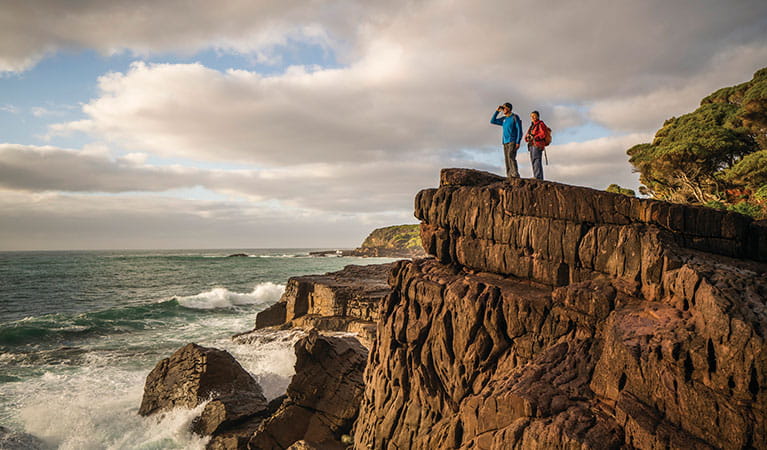
Beowa’s stunning rock formations, inlets and headlands are the result of extensive geological folding. Most of the park lies on red, brown and green shales, sandstones, siltstones and quartzites. They were formed in the Devonian period around 360 million years ago—before dinosaurs roamed the earth. You can see these rock types exposed along the cliffs and headlands. The Devonian period is known as The Age of Fishes and internationally-significant fish fossils have been found in several places along the park’s coastline.
- Guided 3-day Light to Light walks Join the experienced local guides of Sapphire Coast Guiding Co and make the most of one of the best treks on the Far South Coast, in Beowa National Park near Eden.
- Light to Light walk Begin this multi-day walk at Boyds Tower down the far south coast, and end at Green Cape Lighthouse. Stop for a swim and the opportunity to spot seals, seabirds and whales.
Vulnerable species
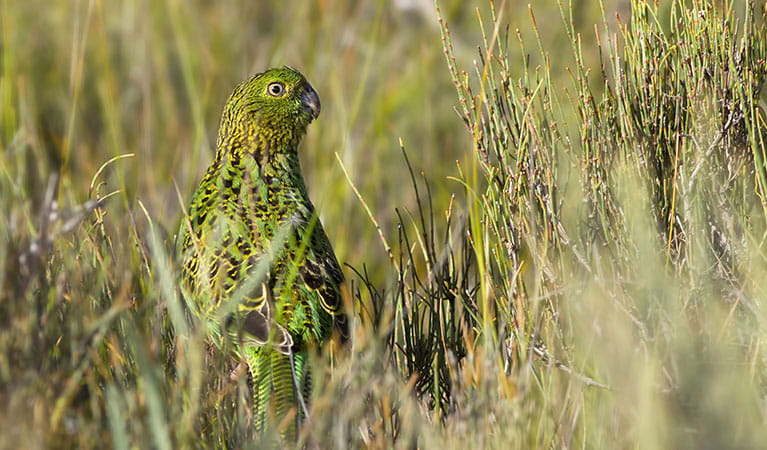
The heathland in the Green Cape area of the park provides significant habitat for vulnerable species like the eastern ground parrot and striated fieldwren. It’s also a stronghold for NSW’s population of the endangered southern brown bandicoot. Around 50 native mammals and nearly 150 species of birds have been recorded in Beowa National Park, including 1 critically endangered bird, 4 endangered animal species and 25 vulnerable species.
- Guided 3-day Light to Light walks Join the experienced local guides of Sapphire Coast Guiding Co and make the most of one of the best treks on the Far South Coast, in Beowa National Park near Eden.
- Light to Light walk Begin this multi-day walk at Boyds Tower down the far south coast, and end at Green Cape Lighthouse. Stop for a swim and the opportunity to spot seals, seabirds and whales.
Fascinating coastal heritage
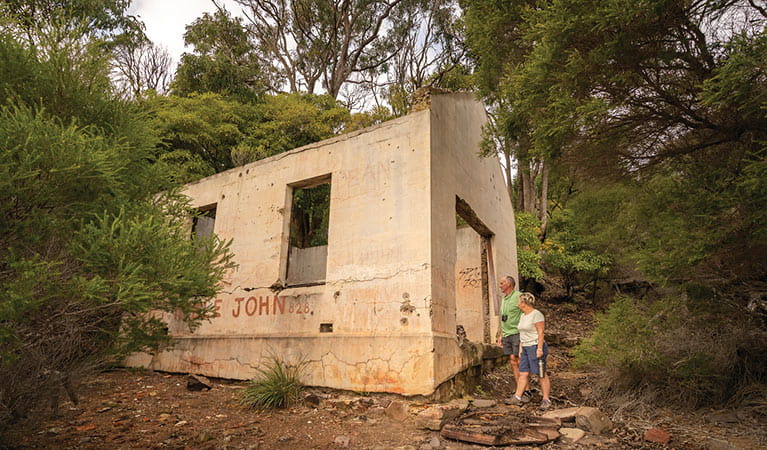
The first shore-based whaling station on mainland Australia was set up at Twofold Bay in 1828. Benjamin Boyd established a competing business and built a private lighthouse, Boyd's Tower, and a township, Boydtown, before being declared bankrupt. The coast was the site of many shipwrecks. Green Cape Lighthstation started operation in 1883 but shipwrecks continued, including the Ly-ee-moon that sank in 1886. You can pay your respects to some of the 76 victims at a graveyard a short walk from the lighthouse. There are also regular guided tours of the lighthouse.
Plants and animals protected in this park
Animals
-
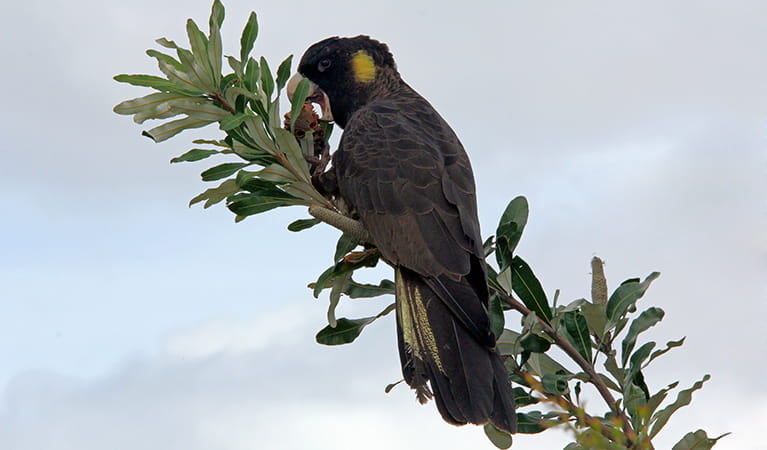
Yellow-tailed black cockatoo (Calyptorhynchus funereus)
The yellow-tailed black cockatoo is one of the largest species of parrot. With dusty-black plumage, they have a yellow tail and cheek patch. They’re easily spotted while bird watching, as they feed on seeds in native forests and pine plantations.
-

White-bellied sea eagle (Haliaeetus leucogaster)
White-bellied sea eagles can be easily identified by their white tail and dark grey wings. These raptors are often spotted cruising the coastal breezes throughout Australia, and make for some scenic bird watching. Powerful Australian birds of prey, they are known to mate for life, and return each year to the same nest to breed.
-

Superb lyrebird (Menura novaehollandiae)
With a complex mimicking call and an elaborate courtship dance to match, the superb lyrebird is one of the most spectacular Australian animals. A bird watching must-see, the superb lyrebird can be found in rainforests and wet woodlands across eastern NSW and Victoria.
-
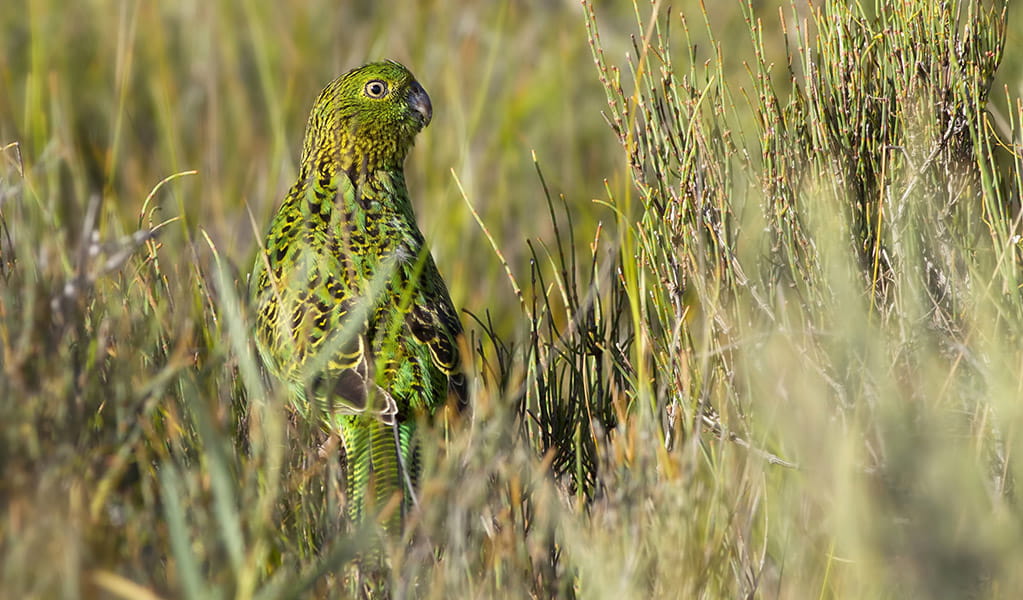
Eastern ground parrot (Pezoporus wallicus wallicus)
The eastern ground parrot is a beautiful, ground-dwelling native bird that lives in low heathland habitat along the NSW North and South coasts and escarpments. It’s listed as a vulnerable species in NSW.
-
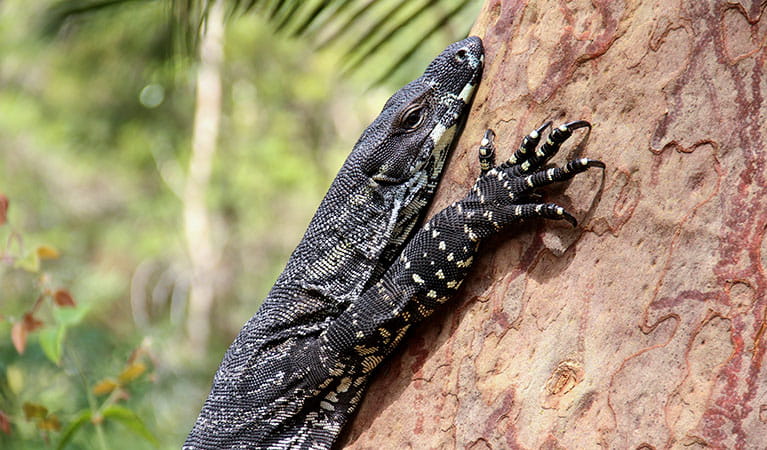
Lace monitor (Varanus varius)
One of Australia’s largest lizards, the carnivorous tree-dwelling lace monitor, or tree goanna, can grow to 2m in length and is found in forests and coastal tablelands across eastern Australia. These Australian animals are typically dark blue in colour with whitish spots or blotches.
Plants
-
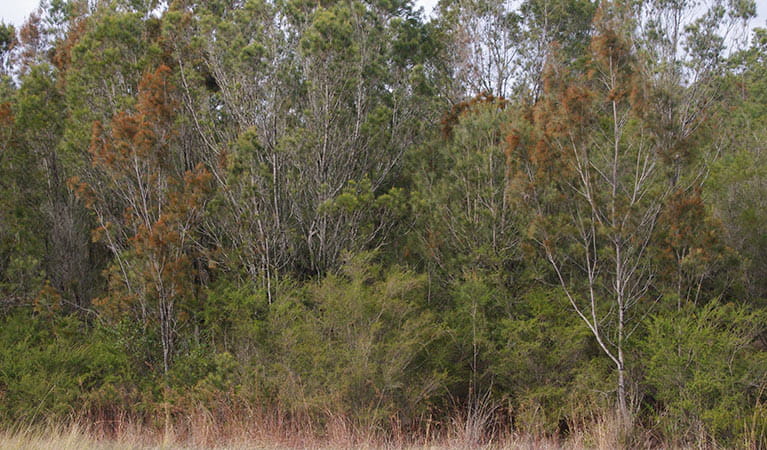
Black sheoak (Allocasuarina littoralis)
The black sheoak is one of a number of casuarina species found across the east coast of Australia and nearby tablelands. Growing to a height of 5-15m, these hardy Australian native plants can survive in poor or sandy soils. The barrel-shaped cone of the black sheoak grows to 10-30mm long.
-
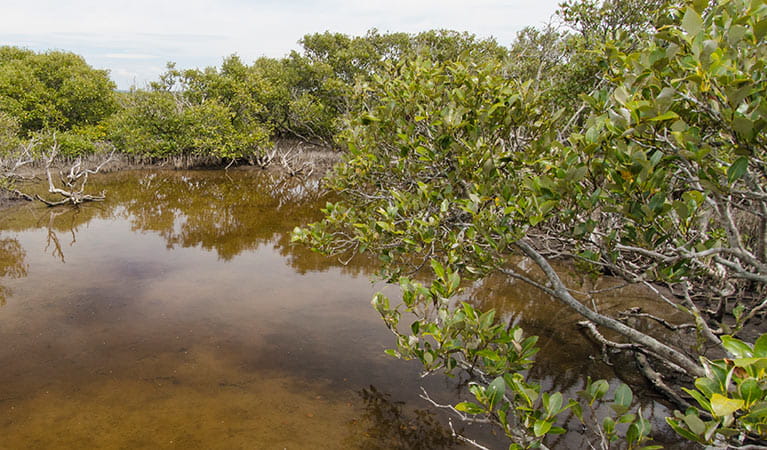
Grey mangrove (Avicennia marina)
Grey mangrove is the most common and widespread mangrove found within intertidal zones across Australia, and throughout the world. Growing to a height of 3-10m, they thrive best in estuaries with a mix of fresh and salt water. They excrete excess salt through their long thick leaves, and absorb oxygen through their aerial root system.
-
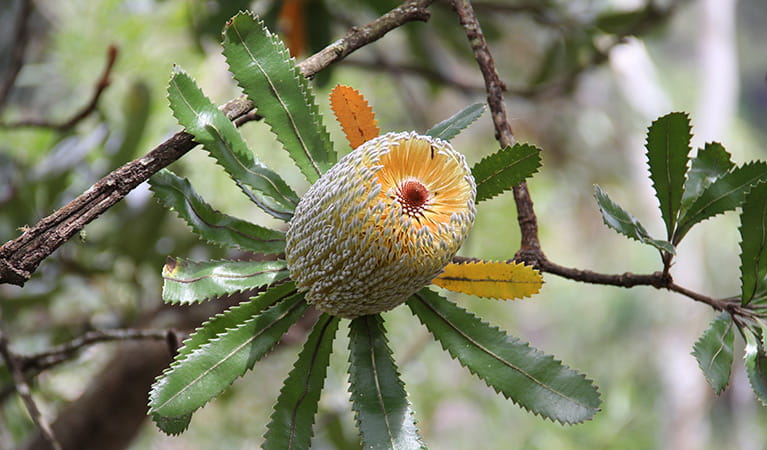
Old man banksia (Banksia serrata)
Hardy Australian native plants, old man banksias can be found along the coast, and in the dry sclerophyll forests and sandstone mountain ranges of NSW. With roughened bark and gnarled limbs, they produce a distinctive cylindrical yellow-green banksia flower which blossoms from summer to early autumn.

